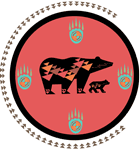Within the past 2 decades, community capacity building and community empowerment have emerged as key strategies for reducing health disparities and promoting public health. As with other strategies and best practices, these concepts have been brought to indigenous (American Indian and Alaska Native) communities primarily by mainstream researchers and practitioners. Mainstream models and their resultant programs, however, often have limited application in meeting the needs and realities of indigenous populations. Tribes are increasingly taking control of their local health care services. It is time for indigenous people not only to develop tribal programs but also to define and integrate the underlying theoretical and cultural frameworks for public health application.
- Resource
- Target
- Family/Parental
- Social/Environmental
- Secondary
- Tertiary
- Community
- Family
- family conflict or violence
- history of child abuse and neglect
- neighborhood disadvantage
- parental substance abuse
- access to health and social services
- concrete support for parents
- family functioning
- knowledge of parenting and child development

